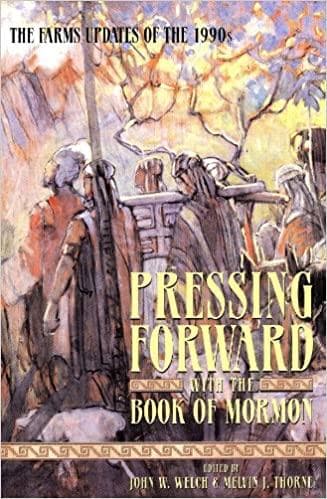Book
69 Chapters

“Wherefore, he came to the hill Ephraim, and he did molten out of the hill, and made swords of steel for those whom he had drawn away with him.” (Ether 7:9)
The question of the relationship between Mesoamerican archaeology and descriptions of the use of iron and other metals in the Book of Mormon is a complex one. The Jaredites, Nephites, and Mulekites came from the ancient Near East, where metallurgy was a widespread, integral part of civilization. There is evidence from the Book of Mormon that some elements of Near Eastern metallurgical technology were brought to the New World.1
How does this evidence relate to Mesoamerican archaeological evidence? John Sorenson provides an extensive survey of metal objects discovered in pre-Columbian Mesoamerica, showing that various types of metals were known and used in this region.2 Nonetheless, it seems that complex metallurgical knowledge and smelting techniques were not widespread in Mesoamerica during the Book of Mormon period. Why would Near Eastern metallurgical knowledge not have become more widespread in Mesoamerica? Could iron working technology have been introduced in the region, yet never have been fully adopted by the majority of the inhabitants?
A partial answer to these questions can be found by comparing the history of iron working in the Norse colonies of Greenland and Vinland (northeastern North America).3 The Norse colonies in Greenland lasted for five centuries from c. A.D. 986–1480. During this time they made occasional exploring expeditions to modern Canada and the northeastern U.S., establishing colonies lasting at least several decades in Labrador, and quite probably elsewhere in North America.
The Vikings were familiar with all forms of medieval European metallurgy. They brought iron smelting technology to North America by about A.D. 1000, as indicated by the discovery of a smithy and iron slag at the Viking site of L’Anse aux Meadows in Labrador.4 Yet, despite known contacts between the Vikings, Eskimos (Inuits), and Algonquian Indians,5 iron smelting technology was never transmitted from the Vikings to the Native Americans. In other words, the Viking experience in Greenland and northeastern North America provides an example of the introduction of iron smelting technology into a new region but the failure of Native Americans to adopt that new technology.
This example is quite instructive for students of the Book of Mormon. Nephi was familiar with ancient Near Eastern metallurgical technologies, which he brought from the Near East to the New World. Metallurgy was known and utilized to a limited extent by the Nephites during certain periods. It is possible that the full range of metallurgical knowledge may have been lost at some point in time. When the Nephites migrated to new areas where ores were not readily available, knowledge of metallurgy could have been lost within a single generation. Similar pressures may have been exerted on Norse colonizers in the New World. Iron working apparently occurred under difficult circumstances in Greenland and Vinland; archaeologists have discovered an ax made from whalebone which was used in place of rare or costly iron axes.6
At any rate, precisely paralleling the experience of the Vikings in the New World, metal smelting technology did not spread beyond Nephite society to other peoples and regions of the New World. It apparently disappeared with the destruction of Nephite civilization, if not before, just as iron smelting disappeared in Greenland and northeastern North America with the collapse of the Viking colonies in the late fifteenth century.
Research by William J. Hamblin, originally published as a FARMS Update in Insights (January 1993): 2.
1. Two important examples are found in 1 Nephi 17:9–16 and Ether 7:9. Sorenson provides a listing of all references to metals in the Book of Mormon in “Metals and Metallurgy relating to the Book of Mormon Text” (FARMS, 1992).
2. See ibid.
3. Two good sources on the Vikings in North America are Erik Wahlgren, The Vikings and America (New York: Thames and Hudson, 1986); and Gwyn Jones, The Norse Atlantic Saga (Oxford: Oxford University Press, 1986).
4. See Jones, 294–95; Wahlgren, 128.
5. See Jones, 130–35; Wahlgren, 14–16.
6. See Wahlgren, 24, figs. 21 and 22.
Book
69 Chapters
Items in the BMC Archive are made publicly available for non-commercial, private use. Inclusion within the BMC Archive does not imply endorsement. Items do not represent the official views of The Church of Jesus Christ of Latter-day Saints or of Book of Mormon Central.